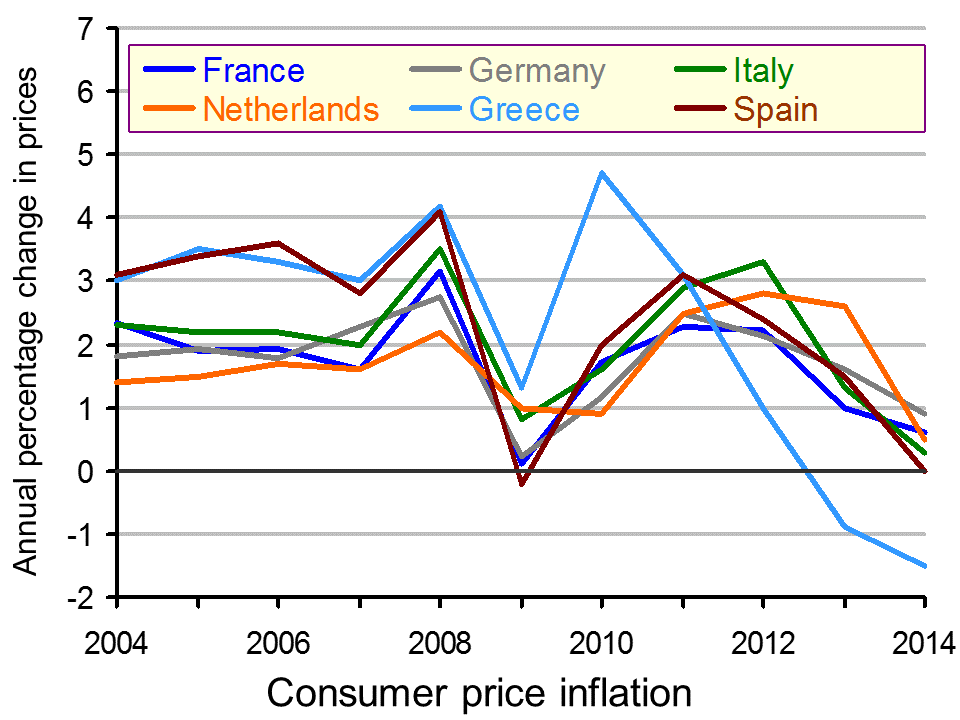 Economics is about choices. But how can people be persuaded to make healthy choices, or socially responsible or environmentally friendly choices? Behavioural economists have studied how people can be ‘nudged’ into changing their behaviour. One version of nudge theory is ‘fun theory’. This studies how people can be persuaded into doing desirable things by making it fun to do so.
Economics is about choices. But how can people be persuaded to make healthy choices, or socially responsible or environmentally friendly choices? Behavioural economists have studied how people can be ‘nudged’ into changing their behaviour. One version of nudge theory is ‘fun theory’. This studies how people can be persuaded into doing desirable things by making it fun to do so.
I came across the first video below a couple of days ago. It looks at a highly successful experiment at the Odenplan underground station in Stockholm to persuade people to make the healthy choice of using the stairs rather than the escalator. It made doing so fun. The stairs were turned into a musical keyboard, complete with sound. Each stair plays a piano note corresponding to its piano key each time someone treads on it. As you go up the stairs you play an ascending scale.
After installing the musical staircase, 66% more people than normal chose the stairs over the escalator.
 The fun theory initiative is sponsored by Volkswagen. The Fun Theory website is ‘dedicated to the thought that something as simple as fun is the easiest way to change people’s behaviour for the better. Be it for yourself, for the environment, or for something entirely different, the only thing that matters is that it’s change for the better.’
The fun theory initiative is sponsored by Volkswagen. The Fun Theory website is ‘dedicated to the thought that something as simple as fun is the easiest way to change people’s behaviour for the better. Be it for yourself, for the environment, or for something entirely different, the only thing that matters is that it’s change for the better.’
VW held a competition in 2009 to encourage people to invent fun products designed to change people’s behaviour. There were over 700 entries and you can see them listed on the site. The 13 finalists included the musical staircase, traffic lights with quiz questions on the red, a Connect Four beer crate, fun tram tickets (giving entry to an instant-win lottery), a pinball exercise machine, a speed camera lottery where a winner is chosen from those abiding by the speed limit, a jukebox rubbish bin (which plays when people add rubbish), a one-armed vending machine, a fun doormat, car safety belts linked to a car’s entertainment system, car safety belt with a gaming screen which turns on when buckled, a bottle bank arcade system and the world’s deepest bin (or at least one which sounds as if it is). The winner was the speed camera lottery.
The fun theory site
Thefuntheory.com
Fun theory videos
 Piano Staircase – Odenplan, Stockholm (on Vimeo)
Piano Staircase – Odenplan, Stockholm (on Vimeo)
 The Speed Camera Lottery (on VIMP.com, Kevin Richardson)
The Speed Camera Lottery (on VIMP.com, Kevin Richardson)
 Garbage Jukebox (on YouTube)
Garbage Jukebox (on YouTube)
 The World’s Deepest Bin (on Vimeo)
The World’s Deepest Bin (on Vimeo)
 Bottle Bank Arcade (on YouTube)
Bottle Bank Arcade (on YouTube)
Questions
- Does fun theory rely on rational choices?
- Other than through having fun, how else may people be nudged into changing their behaviour?
- Go through some of the entries to the Fun Theory Award and choose three that you particularly like. Explain why.
- Invent your own fun theory product. You might do this by discussing it groups and perhaps having a group competition.
 The eurozone is made up of 18 countries (19 in January) and, besides sharing a common currency, they also seem to be sharing the trait of weak economic performance. The key macroeconomic variables across the eurozone nations have all seemingly been moving in the wrong direction and this is causing a lot of concern for policy-makers.
The eurozone is made up of 18 countries (19 in January) and, besides sharing a common currency, they also seem to be sharing the trait of weak economic performance. The key macroeconomic variables across the eurozone nations have all seemingly been moving in the wrong direction and this is causing a lot of concern for policy-makers.
Some of the biggest players in the eurozone have seen economic growth on the down-turn, unemployment rising and consumer and business confidence falling once again. Germany’s economic growth has been revised down and in Italy, unemployment rose to a record of 13.2% in September and around 25% of the workforce remains out of work in Spain and Greece. A significant consequence of the sluggish growth across this 18-nation bloc of countries is the growing risk of deflation.
 Whilst low and stable inflation is a macroeconomic objective across nations, there is such a thing as inflation that is too low. When inflation approaches 0%, the spectre of deflation looms large (see the blog post Deflation danger). The problem of deflation is that when people expect prices to fall, they stop spending. As such, consumption falls and this puts downward pressure on aggregate demand. After all, if you think prices will be lower next week, then you are likely to wait until next week. This decision by consumers will cause aggregate demand to shift to the left, thus pushing national income down, creating higher unemployment. If this expectation continues, then so will the inward shifts in AD. This is the problem facing the eurozone. In November, the inflation rate fell to 0.3%. One of the key causes is falling energy prices – normally good news, but not if inflation is already too low.
Whilst low and stable inflation is a macroeconomic objective across nations, there is such a thing as inflation that is too low. When inflation approaches 0%, the spectre of deflation looms large (see the blog post Deflation danger). The problem of deflation is that when people expect prices to fall, they stop spending. As such, consumption falls and this puts downward pressure on aggregate demand. After all, if you think prices will be lower next week, then you are likely to wait until next week. This decision by consumers will cause aggregate demand to shift to the left, thus pushing national income down, creating higher unemployment. If this expectation continues, then so will the inward shifts in AD. This is the problem facing the eurozone. In November, the inflation rate fell to 0.3%. One of the key causes is falling energy prices – normally good news, but not if inflation is already too low.
 Jonathan Loynes, Chief European Economist at Capital Economics said:
Jonathan Loynes, Chief European Economist at Capital Economics said:
“[the inflation and jobless data] gives the ECB yet another nudge to take urgent further action to revive the recovery and tackle the threat of deflation…We now expect the headline inflation rate to drop below zero at least briefly over the next six months and there is a clear danger of a more prolonged bout of falling prices.”
Some may see the lower prices as a positive change, with less household income being needed to buy the same basket of goods. However, the key question will be whether such low prices are seen as a temporary change or an indication of a longer-term trend. The answer to the question will have a significant effect on business decisions about investment and on the next steps to be taken by the ECB. It also has big consequences for other countries, in particular the UK. The data over the coming months across a range of macroeconomic variables may tell us a lot about what is to come throughout 2015. The following articles consider the eurozone data.
Euro area annual inflation down to 0.3% EuroStat News Release (28/11/14)
Eurozone inflation weakens again, adding pressure on ECB Nasdaq, Brian Blackstone (28/11/14)
Eurozone inflation rate falls in October BBC News (28/11/14)
Eurozone recovery fears weigh on UK plc, says report Financial Times, Alison Smith (30/11/14)
€300bn Jean-Claude Juncker Eurozone kickstarter sounds too good to be true The Guardian, Larry Elliott (26/11/14)
Eurozone area may be in ‘persistent stagnation trap’ says OECD BBC News (25/11/14)
Euro area ‘major risk to world growth’: OECD CNBC, Katy Barnato (25/11/14)
OECD sees gradual world recovery, urges ECB to do more Reuters, Ingrid Melander (25/11/14)
Questions
- What is deflation and why is it such a concern?
- Illustrate the impact of falling consumer demand in an AD/AS diagram.
- What policies are available to the ECB to tackle the problem of deflation? How successful are they likely to be and which factors will determine this?
- To what extent is the economic stagnation in the Eurozone a cause for concern to countries such as the UK and US? Explain your answer.
- How effective would quantitative easing be in combating the problem of deflation?
 Nearly two years ago, France lost its triple A credit-rating and the news has only got worse. Unemployment has risen and economic growth in France has remained low and this is one of the reasons why France’s credit rating has been downgraded further from AA+ to AA. A high credit rating doesn’t guarantee market confidence, but it does help to keep the cost of borrowing for the government low. Thus, this downgrading could spell trouble for French borrowing costs.
Nearly two years ago, France lost its triple A credit-rating and the news has only got worse. Unemployment has risen and economic growth in France has remained low and this is one of the reasons why France’s credit rating has been downgraded further from AA+ to AA. A high credit rating doesn’t guarantee market confidence, but it does help to keep the cost of borrowing for the government low. Thus, this downgrading could spell trouble for French borrowing costs.
Standard and Poor’s (S&P), who downgraded the French credit rating, is expecting government debt to rise to 86% of gross domestic product and believes that unemployment will remain above 10% until 2016. While the French government has put various reforms in place to boost the struggling economy, S&P don’t believe they are sufficient and have been very public in criticising the government’s effort. They were quoted as saying:
We believe the French government’s reforms to taxation, as well as to product, services and labour markets, will not substantially raise France’s medium-term growth prospects and that on-going high unemployment is weakening support for further significant fiscal and structural policy measures.
Following the downgrading, the return for those investors purchasing French debt did begin to rise, echoing the theory that the cost of borrowing would rise.  The yield on French government 10-year bonds increased from 2.158% to 2.389%. The outlook given to France by S&P was ‘stable’, implying that there is a relatively low chance that S&P would change France’s credit-rating again in the next two years.
The yield on French government 10-year bonds increased from 2.158% to 2.389%. The outlook given to France by S&P was ‘stable’, implying that there is a relatively low chance that S&P would change France’s credit-rating again in the next two years.
Many were surprised at the downgrading of France’s credit rating, but this may be the nudge that President Hollande needs to push through extensive labour market reforms with the aim of reducing unemployment and generating growth in the economy. Despite this latest move by S&P, the other credit rating agencies have yet to take similar action. Perhaps they are more convinced by the Finance Minister, Pierre Moscovici who claims that France’s debt is ‘one of the safest and most liquid in the world.’ He commented that:
 They are underestimating France’s ability to reform, to pull itself up … During the last 18 months the government has implemented major reforms aimed at improving the French economic situation, restoring its public finances and its competitiveness.
They are underestimating France’s ability to reform, to pull itself up … During the last 18 months the government has implemented major reforms aimed at improving the French economic situation, restoring its public finances and its competitiveness.
It will take some time for the full impact of this development in France’s economy to become apparent. The cost of borrowing has already risen only time will tell what will happen to market confidence over the coming weeks. However, what is certain is that pressure is already mounting on Francois Hollande. The following articles consider the French economy.
France told to reform labour market after second credit rating downgrade The Guardian, Phillip Inman (8/13/13)
France’s credit rating cut by S&P to AA BBC News (8/11/13)
S&P lowers France rating on reform doubts, markets unfazed Reuters, Nicholas Vinocur (8/11/13)
Hollande approval rating slumps as France downgraded The Telegraph, James Titcomb (8/11/13)
S&P cuts France’s credit rating by one notch to double-A Wall Street Journal, William Horobin (8/11/13)
Five charts that show the state of the French economy The Telegraph (8/11/13)
France rating downgrade heaps pressure on Francois Hollande Financial Times, Michael Stothard (8/11/13)
Questions
- What does a double A rating mean for the French economy?
- Which factors will be considered when a ratings agency decides to change a country’s credit rating?
- France’s unemployment rate is one of the key factors that S&P has considered. Why is France’s unemployment rate so high? Which type(s) of unemployment are increasing?
- Use a diagram to illustrate the unemployment that France is facing.
- If a country does see its credit rating downgraded, what might this mean for government borrowing costs? Explain why this might cause further problems for a country?
- Markets have been ‘unfazed’ by the downgrade. How do you think markets will react to over the coming weeks? Explain your answer.
- What action could the French government take to ensure that S&P is the only ratings agency that downgrades their credit rating?
The UK and US governments face a conundrum. To achieve economic recovery, aggregate demand needs to expand. This means that one or more of consumption, government expenditure, exports and investment must rise. But the government is trying to reduce government expenditure in order to reduce the size of the public-sector deficit and debt; exports are being held back by the slow recovery, or even return to recession, in the eurozone and the USA; and investment is being dampened by business pessimism. This leaves consumer expenditure. For recovery, High Street spending needs to rise.
But herein lies the dilemma. For consumer spending to rise, people need to save less and/or borrow more. But UK and US saving rates are already much lower than in many other countries. You can see this by examining Table 23 in OECD Economic Outlook. Also, household debt is much higher in the UK and USA. This has been largely the result of the ready availability of credit through credit cards and other means. The government is keen to encourage people to save more and to reduce their reliance on debt – in other words, to start paying off their credit-card and other debt. That way, the government hopes, the economy will become ‘rebalanced’. But this rebalancing, in the short run at least, will dampen aggregate demand. And that will hardly help recovery!
In the following podcast, Sheldon Garon discusses his new book Beyond Our Means. He describes the decline of saving in the USA and UK and examines why other countries have had much higher saving rates.
‘He also seeks to explain why high interest rates didn’t encourage saving in the boom years and why current levels of relatively high inflation haven’t stopped savings rates shooting up again in Britain.’
 Living beyond our means Guardian: the Business Podcast, Sheldon Garon talks to Tom Clark (2/11/11)
Living beyond our means Guardian: the Business Podcast, Sheldon Garon talks to Tom Clark (2/11/11)
Questions
- Why have saving rates in the UK and USA been much lower than those in many other countries? How significant has been the availability of credit in determining savings rates?
- Why have saving rates increased in the UK and USA since 2008/9 despite negative real interest rates in many months?
- Explain what is meant by the “paradox of thrift”. What are the implications of this paradox for government policy at the present time?
- Why may it be difficult to have a consumer-led recovery in the UK and US economies?
- What is the life-cycle theory of consumption and saving? How well does it explain saving rates?
- Can people be given a “nudge” to spend more or to save more? If so, what nudges might be appropriate in the current situation?
- Why do countries with a more equal distribution of income have higher saving rates?
- What is the relationship between the saving rate and (a) the rate of inflation and (b) the real rate of interest? Why is this the case?
In 2009, Nudge: Improving Decisions about Health, Wealth, and Happiness was published. This book by Richard Thaler and Cass R. Sunstein examines how people are influenced to make decisions or change behaviour.
According to Thaler and Sunstein, people can be ‘nudged’ to change their behaviour. For example, healthy food can be placed in a prominent position in a supermarket or healthy snacks at the checkout. Often it is the junk foods that are displayed prominently and unhealthy, but tasty, snacks are found by the checkout. If fashion houses ceased to use ultra thin models, it could reduce the incentive for many girls to under-eat. If kids at school are given stars or smiley faces for turning off lights or picking up litter, they might be more inclined to do so.
The UK government has been investigating the use of ‘nudges’ as a way of changing behaviour, and the House of Lords Science and Technology Committee has been considering the question. It has just published its report, Behaviour Change. The summary of the report states that:
The currently influential book Nudge by Richard Thaler and Cass Sunstein advocates a range of non-regulatory interventions that seek to influence behaviour by altering the context or environment in which people choose, and seek to influence behaviour in ways which people often do not notice. This approach differs from more traditional government attempts to change behaviour, which have either used regulatory interventions or relied on overt persuasion.
The current Government have taken a considerable interest in the use of “nudge interventions”. Consequently, one aim of this inquiry was to assess the evidence-base for the effectiveness of “nudges”. However, we also examined evidence for the effectiveness of other types of policy intervention, regulatory and non-regulatory, and asked whether the Government make good use of the full range of available evidence when seeking to change behaviour.
The report finds that nudges
… used in isolation will often not be effective in changing the behaviour of the population. Instead, a whole range of measures – including some regulatory measures – will be needed to change behaviour in a way that will make a real difference to society’s biggest problems.
So is there, nevertheless, a role for nudges in changing behaviour – albeit alongside other measures? Read the report and the articles below to find out!
Articles
Lords report calls for regulation over persuasion to improve public health Wales Online, David Williamson (19/7/11)
Government’s ‘nudge’ approach to health is not enough, according to House of Lords and Work Foundation HR Magazine, David Woods (20/7/11)
How can I tell if I’ve been nudged Independent, Natalie Haynes (20/7/11)
Healthier behaviour plans are nudge in the wrong direction, say peers Guardian, Sarah Boseley (19/7/11)
‘Nudge’ is not enough, it’s true. But we already knew that Guardian, Jonathan Rowson (19/7/11)
Nudge not enough to change lifestyles – peers BBC News, Nick Triggle (19/7/11)
Why a nudge is not enough to change behaviour BBC News, Baroness Julia Neuberger (19/7/11)
House of Lords findings: why green Nudges are not enough The Green Living Blog, Baroness Julia Neuberger (19/7/11)
 Lords Science and Technology Sub-Committee publish report on Behaviour Change YouTube, Baroness Julia Neuberger (14/7/11)
Lords Science and Technology Sub-Committee publish report on Behaviour Change YouTube, Baroness Julia Neuberger (14/7/11)
Report
Press Release Lords Science and Technology Select Committee (19/7/11)
Behaviour Change Lords Science and Technology Select Committee (online version) (19/7/11)
Behaviour Change Lords Science and Technology Select Committee (PDF version) (19/7/11)
Questions
- When may a nudge (a) be enough, (b) not be enough to change behaviour?
- What instruments does the government have to change behaviour?
- Distinguish between a ‘technical’ and an ‘adaptive’ solution to changing behaviour. Give examples.
- Why might adaptive solutions provide more of a challenge to policymakers than technical solutions.
- Can a nudge ever be transformative?
 Economics is about choices. But how can people be persuaded to make healthy choices, or socially responsible or environmentally friendly choices? Behavioural economists have studied how people can be ‘nudged’ into changing their behaviour. One version of nudge theory is ‘fun theory’. This studies how people can be persuaded into doing desirable things by making it fun to do so.
Economics is about choices. But how can people be persuaded to make healthy choices, or socially responsible or environmentally friendly choices? Behavioural economists have studied how people can be ‘nudged’ into changing their behaviour. One version of nudge theory is ‘fun theory’. This studies how people can be persuaded into doing desirable things by making it fun to do so. The fun theory initiative is sponsored by Volkswagen. The Fun Theory website is ‘dedicated to the thought that something as simple as fun is the easiest way to change people’s behaviour for the better. Be it for yourself, for the environment, or for something entirely different, the only thing that matters is that it’s change for the better.’
The fun theory initiative is sponsored by Volkswagen. The Fun Theory website is ‘dedicated to the thought that something as simple as fun is the easiest way to change people’s behaviour for the better. Be it for yourself, for the environment, or for something entirely different, the only thing that matters is that it’s change for the better.’ Piano Staircase – Odenplan, Stockholm (on Vimeo)
Piano Staircase – Odenplan, Stockholm (on Vimeo) The Speed Camera Lottery (on VIMP.com, Kevin Richardson)
The Speed Camera Lottery (on VIMP.com, Kevin Richardson) Garbage Jukebox (on YouTube)
Garbage Jukebox (on YouTube) The World’s Deepest Bin (on Vimeo)
The World’s Deepest Bin (on Vimeo) Bottle Bank Arcade (on YouTube)
Bottle Bank Arcade (on YouTube)




